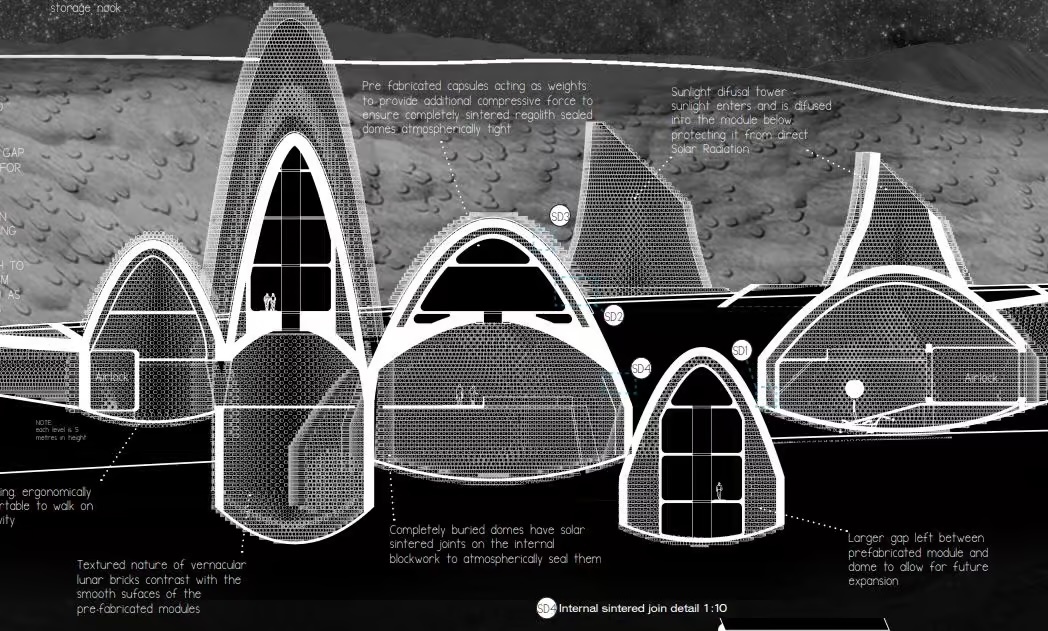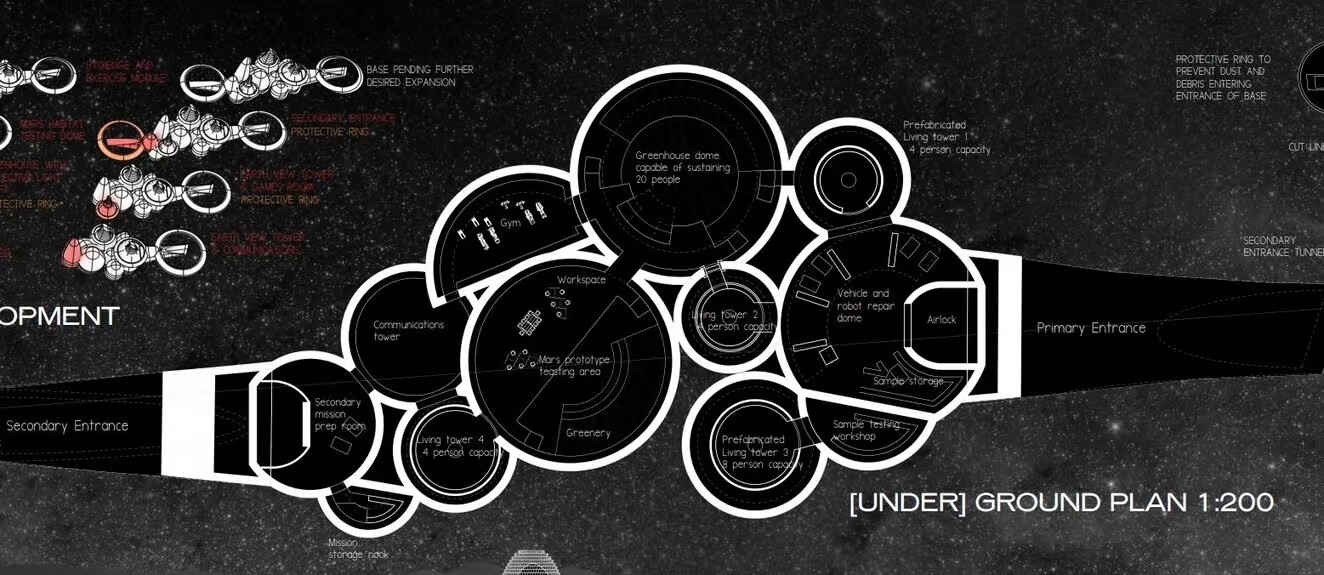28.04.2025
One day soon, we may have permanent human dwellings on the Moon.
These structures will need to withstand extreme conditions to protect the vulnerable astronauts and essential equipment inside. And, when things inevitably do go wrong, there won’t be lunar tradies around to repair them.
“One of the things we’ve got very used to here on Earth is calling a repairperson,” says Monika Stankiewicz, a PhD student in lunar architecture at the University of Adelaide.
“That’s not something we can rely on, because the people aren’t there.”
Resources to repair buildings will either be made on the Moon or shuttled on a rocket, the world’s most expensive logistics route.
Stankiewicz has been rethinking the architecture of lunar bases, designing outer protective structures made from lunar regolith bricks to shield the inner pressurised human habitats from a multitude of threats.
She’s heading to the US on South Australian Fulbright scholarship to simulate the impact of lunar conditions on her designs. From August, Stankiewicz will spend 10 months at the University of Texas San Antonio, using a modelling tool developed by the NASA-funded Resilient ExtraTerrestrial Habitats Institute (RETHi).
“When you’re establishing a lunar base, things can go wrong,” says Stankiewicz.

Design of a moon settlement. Credit: Monika Stankiewicz
“Your base gets hit by micrometeorites or by moonquakes, or … [lunar] dust gets into the wrong parts of your base and then causes damage, or the temperature extremes cycling up and down causes cracks in your components or your bases.
“What I’ll be focusing on is … testing out different design strategies for creating this protective regolith architecture,” she explains.
To start, she’ll be simulating the damage caused by micrometeorites.
Rather than burning up like they do in Earth’s thick, protective atmosphere, these punch through the Moon’s almost non-existent atmosphere at speeds between 8-72km per second. That’s about 9-86 times faster than the typical velocity of a bullet.
The lack of atmosphere also allows cosmic rays and solar particles to travel unimpeded to its surface, while temperatures fluctuate by hundreds of degrees between full sunlight and pitch-black shade.
But part of the difficulty of repairing a permanent station on the Moon is knowing when it has become damaged in the first place.
To address this, Stankiewicz will simulate how damage to an outer structure might result in temperature changes within the pressurised habitat it protects.
“That protective regolith architecture, it’s there as well to protect the humans from those extremes in temperature. It acts as an insulation or heatsink … so that the power systems inside the pressurised habitat don’t have to pump in extra energy to keep it in that comfortable range.
“When your protective architecture gets damaged, it’s then less capable of shielding … which then means that the power systems need to pull more power to keep the people comfortable.”
Additional power draw in a section of the habitat could act as a warning sign to indicate that a part of the outer protective structure has been compromised.
“One of the things that I was looking at last year … was this idea of sintering or lasering AprilTags onto the surfaces on the blocks,” she adds. This tag system of 2-dimensional bar codes is similar to QR codes but is detected more easily and from longer ranges.

Design of a moon settlement. Credit: Monika Stankiewicz
An inspection of the outer structure might assess whether each tag remains readable and in the same position it was initially placed.
But when it comes time to do the fixing up, who will be doing the work?
“One of the things that’s still under development is: what does our lunar workforce even look like? Because when you’ve got astronauts who are there on 30-day through 60-day missions, a lot of that time is heavily scheduled,” she explains.
Astronauts have daily experiments to complete, and may even perform lunar surface missions, which Stankiewicz says they can carry out for just 1 or 2 days before having to take scheduled breaks. And of course, they need to sleep and attend to their own needs.
“People are looking at robotics, or robotic workers, as a way to solve that problem,” she says.
But robots come with their own challenges.
“Do you design the habitat first … and just design the robots to deal with the habitat?” she speculates.
“Or do you design the habitat so that it’s compatible with the robot?”
But while Stankiewicz is investigating these issues in a lunar context, she believes that what we learn about building on the Moon can be implemented on Earth too.
“I can take that same design thinking and apply it to the everyday Australian home [or commercial building],” she says.
Quelle: COSMOS
